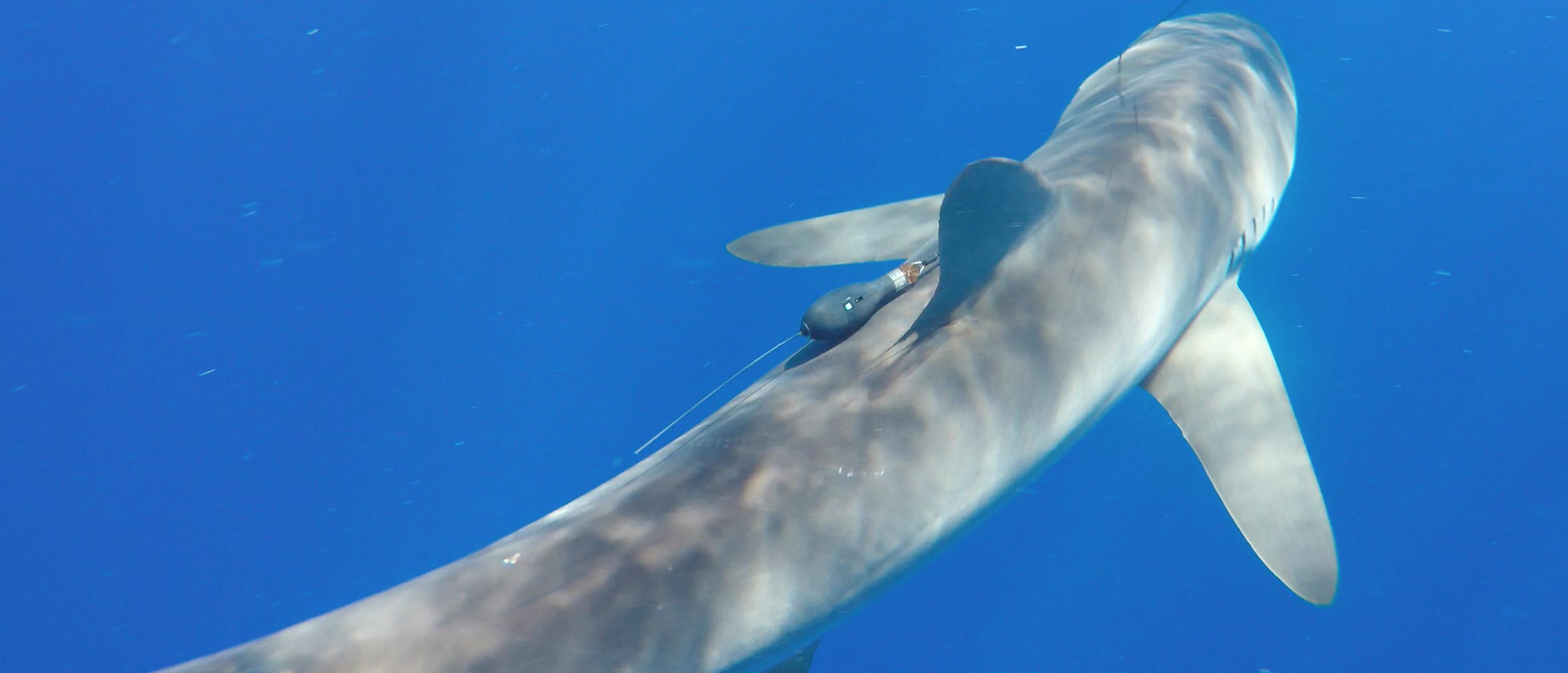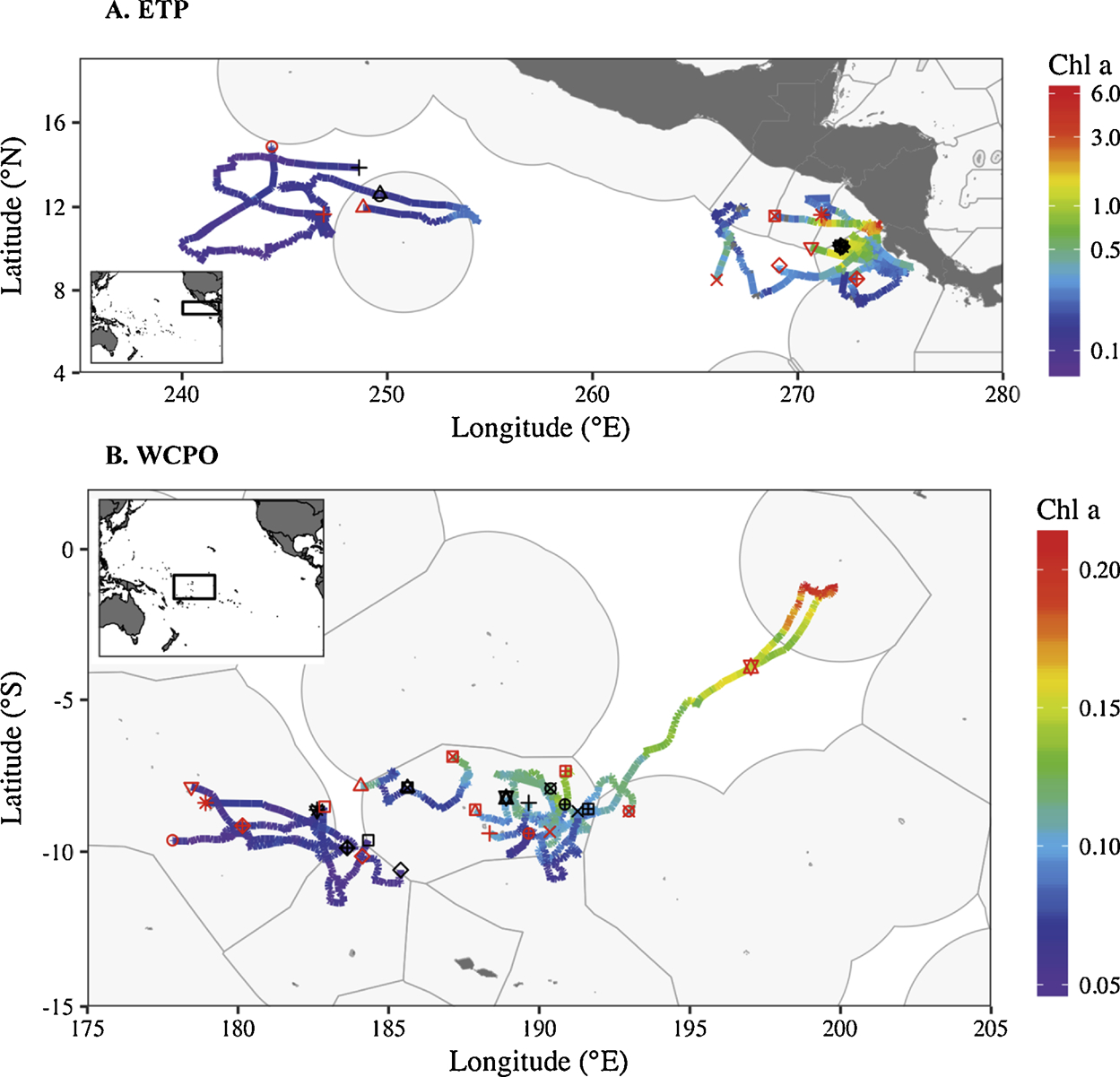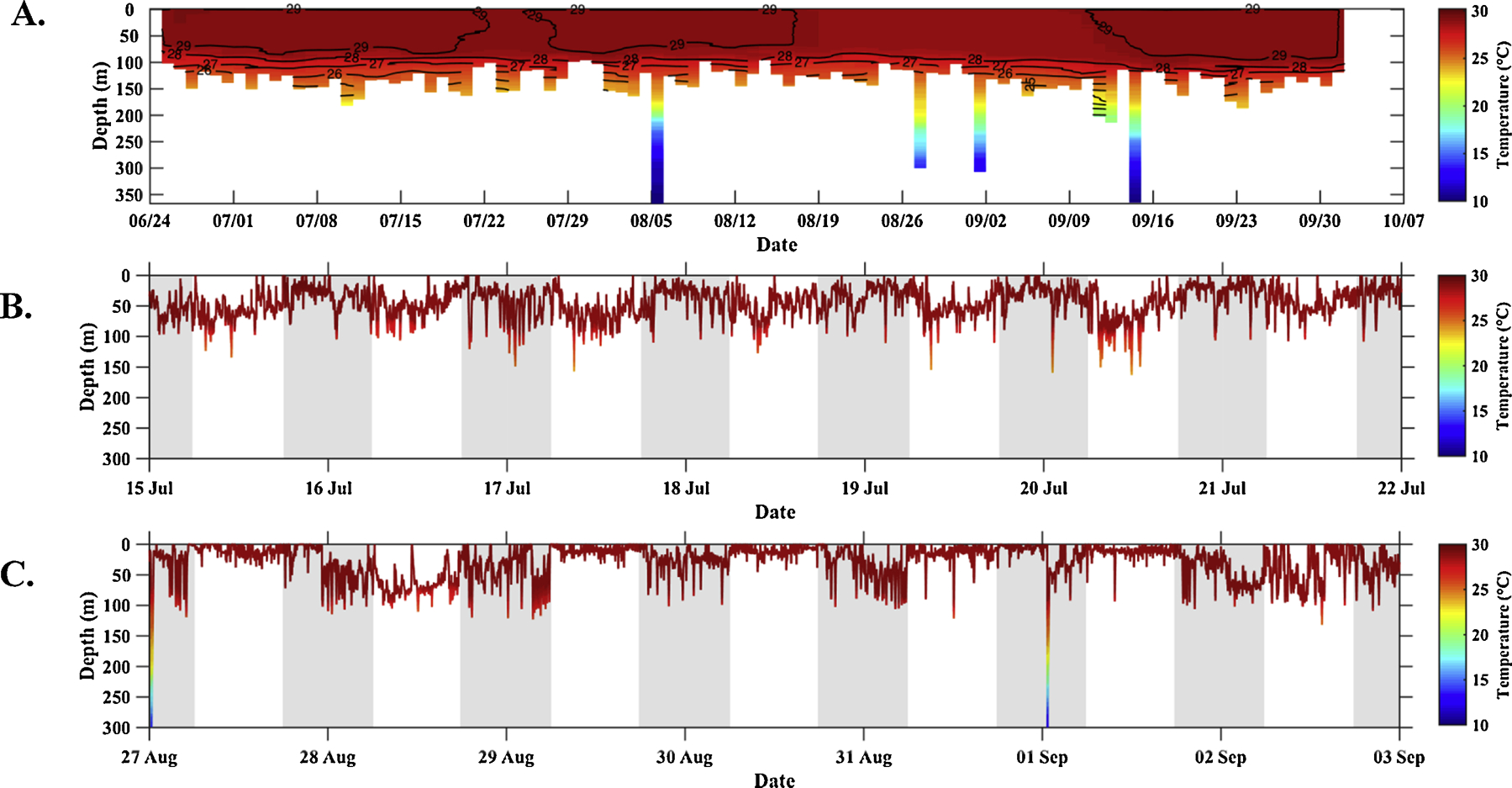← Back
Understanding silky shark movement patterns to avoid interactions with fisheries

Silky sharks occupy the same habitat as some marketable tuna species, thus leading to high risks of bycatch by fisheries. A NOAA study using a combination of telemetry technologies, including Argos satellite telemetry, aims to identify potential patterns in silky shark behavior in order to devise effective bycatch mitigation strategies.
The silky shark (Carcharhinus falciformis) is a circumglobal species living in tropical waters found where waters are warmer than 23 °C. They also occupy the upper, warmest surface mixed layer of the water column, which overlaps with the preferred habitat of yellowfin and skipjack tuna. Since this is also where fisheries operate, juvenile silky sharks are vulnerable to extensive fishing effort, making this species one of the larger components of elasmobranch bycatch in tuna target fisheries. Estimates range from about 300,000 to 634,000 individuals caught each year in the western and central Pacific Ocean. Efforts to reduce the impacts of fishing on global silky shark populations have included “no retention” measures in several regional fishery management organizations; however, these strategies have not proven successful in reducing shark mortality. Scientists from the National Oceanic and Atmospheric Administration (NOAA) and the International Seafood Sustainability Foundation are using satellite linked archival tags to improve our understanding of the habitat use and movement behaviors of this species, including spatial organization of its juvenile stage to inform fisheries management strategies to reduce interactions.
In this study silky sharks were captured in the eastern tropical Pacific (ETP) and in the western and central Pacific Ocean (WCPO) in 2004–2005 and in 2012, and fitted with Argos telemetry tags. In the eastern tropical Pacific, near Clipperton Island and Costa Rica, ten juvenile silky sharks were equipped with Argos linked pop-up satellite archival transmitting tags with three of those sharks double tagged with smart position or temperature transmitting tags (SPOTs, Wildlife Computers Inc., Redmond, Washington, USA). This double tagging provides near real-time position when the tag was out of the water. In the western and central Pacific Ocean, 26 juvenile sharks were equipped with pop-up archival transmitting tags (Wildlife Computers Inc., Redmond, Washington, USA).

Silky shark tracks compared with chlorophyll-a concentrations from satellites. The crosses and squares show the ends of the tracks. (Credit NOAA Fisheries)
Analysis of the transmitted tag data showed that the sharks stayed at mean temperatures around 28 and 29 °C (lowest 26.8, highest 31.3 °C). Their vertical movements were restricted to depths less than 5–10 m in the ETP and shallower than 100 m in the western and central Pacific Ocean, which corresponds with the vertical structure of the mixed layer in each region. They often moved into less productive regions than the ones they were tagged in, but the tracking duration (up to 129 days) did not permit the identification of core habitat areas or migration corridors. Total track lengths ranged from approximately 250 to 3,880 km, whereas the actual distance between the tagging location and tag release location was an order of magnitude shorter in most cases (120–1,010 km).

Archived tag data illustrating the depth and temperature for an entire deployment from one of the sharks. A shows the whole track (100 days), while B and C show two different weeks from these 100 days. C illustrates deep dives beyond the thermocline depths. Shaded areas represent nighttime. (Credit NOAA Fisheries)
This study showed that silky sharks occupy shallow depth ranges, which make them vulnerable to capture in both purse seine and longline fisheries across the Pacific Ocean. The short tag deployment periods do not show the effects of seasonality and migrations that may occur over the long term, but do show that juvenile sharks are capable of directed long distance movements across international boundaries. This strengthens the argument for international collaboration on conservation strategies.
Reference
Melanie Hutchinson, Daniel M. Coffey, Kim Holland, David Itano, Bruno Leroy, Suzanne Kohin, Russell Vetter, Ashley J. Williams, Johanna Wren (2019) Movements and habitat use of juvenile silky sharks in the Pacific Ocean inform conservation strategies, Fisheries Research 210: 131–142, https://doi.org/10.1016/j.fishres.2018.10.016
Links
Photo: a silky shark with a pop-up tag (Credit NOAA Fisheries)


